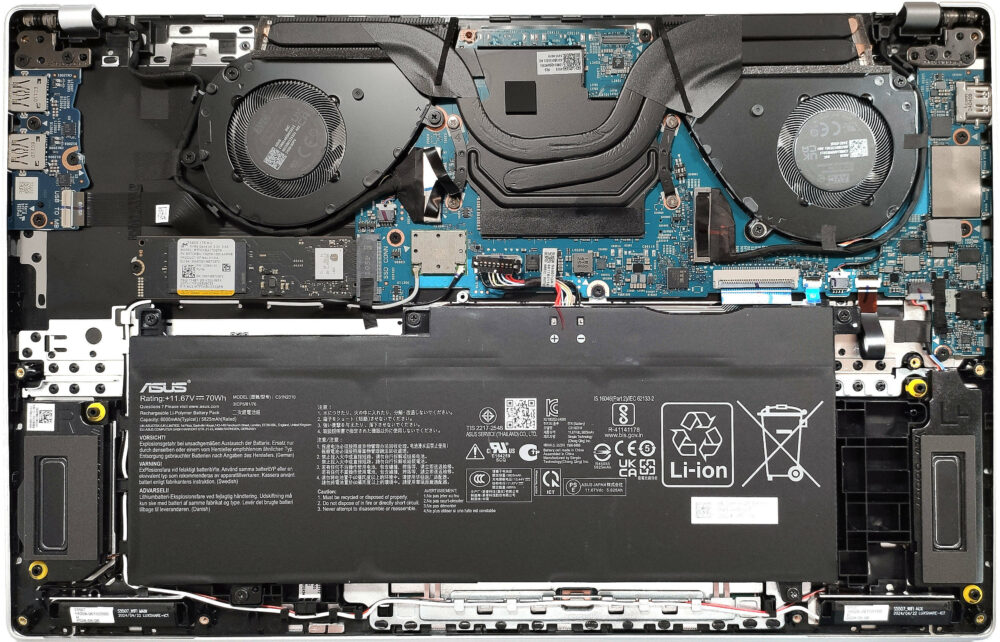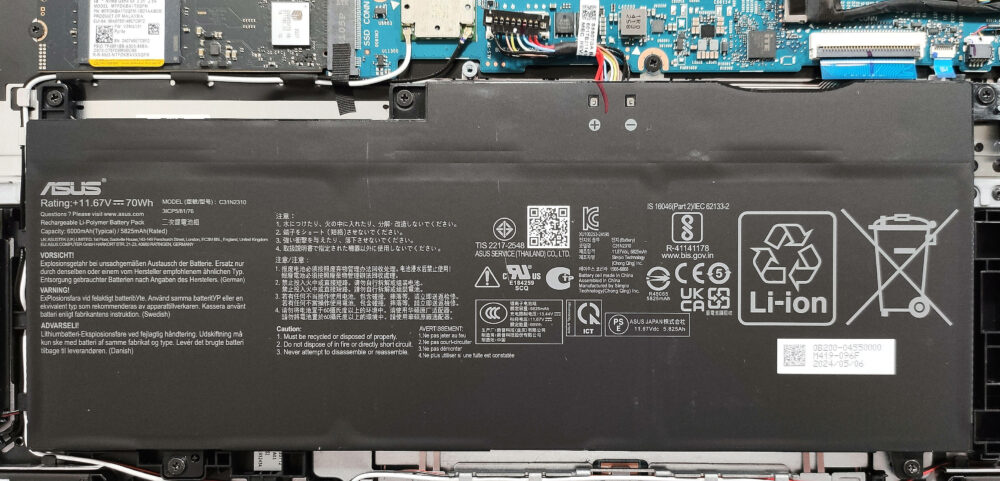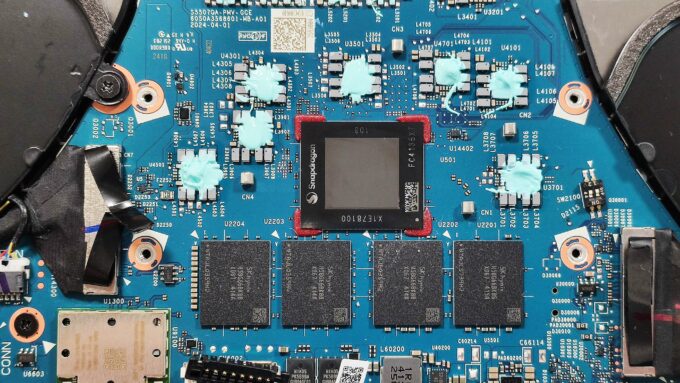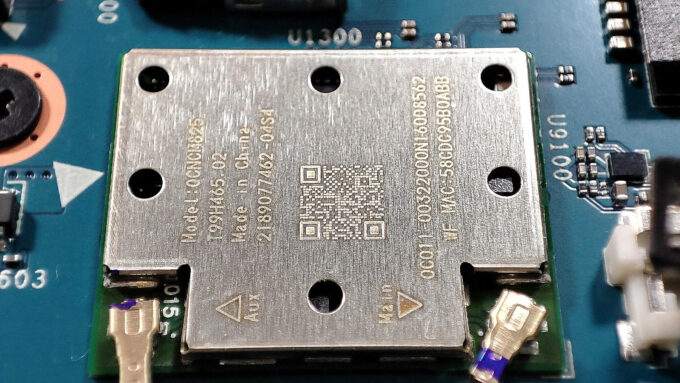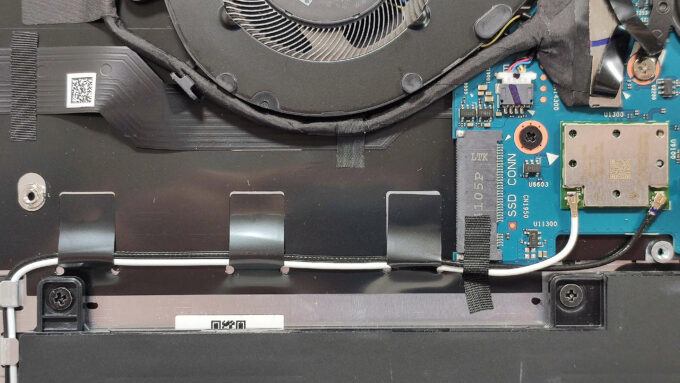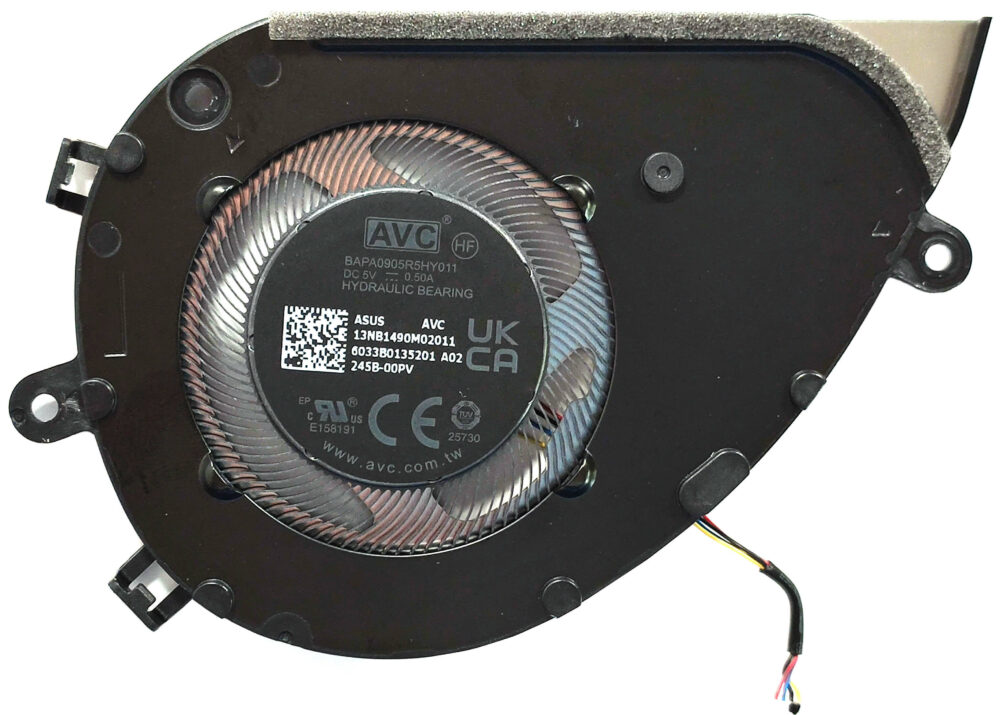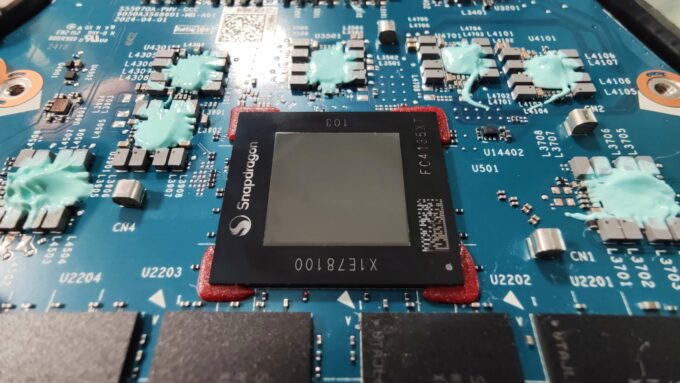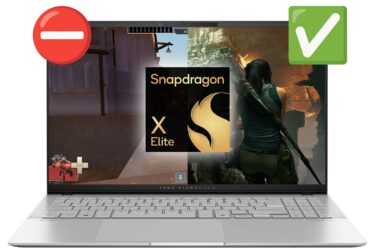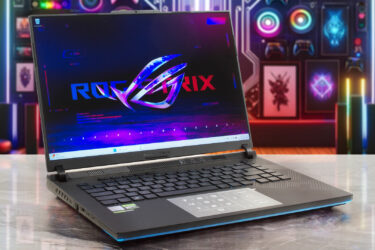ASUS Vivobook S 15 OLED S5507 review – AI-Powered Everyday Companion with Superb Display and a Software Caveat
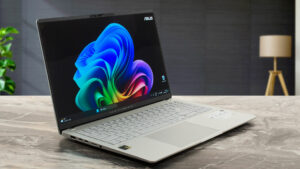 The hype around the new AI-powered Snapdragon X Elite Processor is real and the ASUS Vivobook S 15 OLED S5507 is one of the first available devices on the market with this SoC. The main focus here is the dedicated 45 TOPS NPU chip for accelerated productivity. The laptop has tons of preinstalled AI-based Microsft and ASUS software. At least for now, only a few apps are natively designed for this ARM chip, while the others work in emulation mode.
The hype around the new AI-powered Snapdragon X Elite Processor is real and the ASUS Vivobook S 15 OLED S5507 is one of the first available devices on the market with this SoC. The main focus here is the dedicated 45 TOPS NPU chip for accelerated productivity. The laptop has tons of preinstalled AI-based Microsft and ASUS software. At least for now, only a few apps are natively designed for this ARM chip, while the others work in emulation mode.
The device can be picked with Snapdragon X Plus X1P-64-100 or Snapdragon X Elite X1E-78-100 CPU. They offer 10 or 12 cores respectively plus Snapdragon X Elite Adreno GPU. The machine can be configured with up to 32GB of LPDDR5x-8448 MHz RAM. This amount of memory should be more than enough even for professional work. The connectivity is the latest and greatest combo of Wi-Fi 7 + Bluetooth 5.4. The port selection is surprisingly modern with two 40 Gbps USB4 connectors.
The so-called ASUS Lumina OLED display is one of the main advantages of this notebook. The panel boasts a high resolution of 2880×1620, 120Hz refresh rate, infinite contrast ratio, and superb color coverage. This Vivobook machine is light and thin, and it brings to the table goodies such IR Web camera, premium materials for the build, and a Harman Kardon-certified audio system.
You can check the prices and configurations in our Specs System: https://laptopmedia.com/series/asus-vivobook-s-15-oled-s5507/
Contents
Specs, Drivers, What’s in the box
- HDD/SSD
- up to 1000GB SSD
- M.2 Slot
- 1x 2280 PCIe NVMe 4.0 x4 See photo
- RAM
- up to 32GB
- OS
- Windows 11 Pro, Windows 11 Home
- Battery
- 70Wh
- Body material
- Aluminum
- Dimensions
- 352.6 x 226.9 x 1.47 - 1.59 mm (13.88" x 8.93" x 0.06")
- Weight
- 1.42 kg (3.1 lbs)
- Ports and connectivity
- 2x USB Type-A
- 3.2 Gen 1 (5 Gbps)
- 2x USB Type-C
- 4.0, Power Delivery (PD), DisplayPort
- HDMI
- 2.1
- Card reader
- microSD (microSD, microSDHC, microSDXC)
- Ethernet LAN
- Wi-Fi
- 802.11be
- Bluetooth
- 5.4
- Audio jack
- 3.5mm Combo Jack
- Features
- Fingerprint reader
- Web camera
- FHD IR with Windows Hello
- Backlit keyboard
- Microphone
- Array Microphone
- Speakers
- Speaker, Smart Amp Technology, harman/kardon
- Optical drive
- Security Lock slot
All ASUS Vivobook S 15 OLED (S5507) configurations
Drivers
All drivers and utilities for this notebook can be found here: https://www.qualcomm.com/products/mobile/snapdragon/pcs-and-tablets/snapdragon-x-elite#Software
What’s in the box?
The box contains the notebook itself, a bit of paperwork, and a 90W Type-C adapter. Depending on your region, you can also get a wired USB optical mouse or a 3-in-1 backpack.
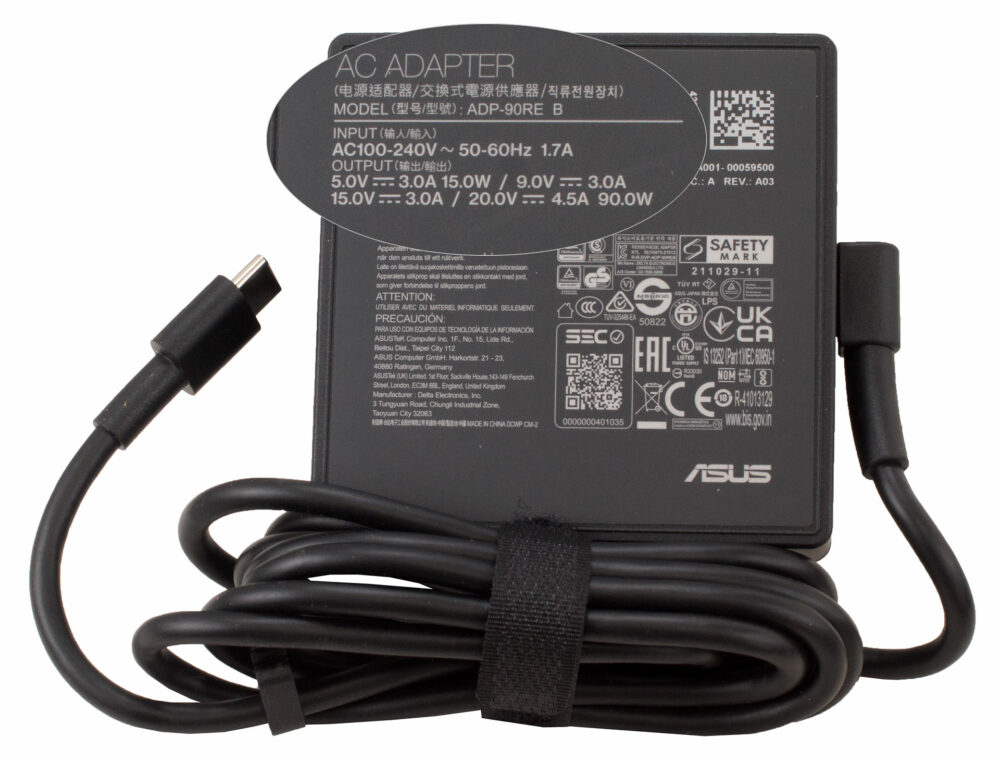
Design and construction
The looks of the ASUS Vivobook S 15 OLED S5507 remind us of other laptops from the same manufacturer like the Vivobook 15 OLED (M1505) or Vivobook 16 (M1605). The gadget looks up-to-date and it’s light and thin and the same time. It stops the scales at 1.42 kg and the profile thickness is 14.7 – 15.9 mm. Yep, that’s pretty good for a 15-incher. The finish doesn’t pick up smudges easily. The all-metal build feels nice to the touch.
The hinges are smooth and you can open the lid effortlessly with one hand. The unit feels averagely flexible when we try to twist it. The base is solid with a few exceptions here and there. If you apply more pressure on purpose, you can slightly bend the zones above the touchpad and below the Arrow keys. This isn’t an issue in real-life scenarios like home or office usage.
The OLED display is surrounded by thin bezels. The top one houses a 1080p Web camera with a privacy shutter. The IR unit can be used for Windows Hello.
Thanks to the 180-degree hinge, the laptop can lay flat on your desk. The lid doesn’t have a lever design, since the chassis sits pretty high off the ground.
The single-color backlit keyboard is perhaps all you need for normal home or office usage. Its illumination is controlled via the ASUS software.
The board has big well-spaced keys, a dedicated Copilot shortcut, and a NumPad. The tiny Arrow keys aren’t very comfortable though. The key travel is long which is great while the feedback is a bit soft but still good enough for work. While typing, you’ll notice that the keyboard is quiet.
The touchpad is big, smooth, and very accurate. Its clicks are near-silent. The pad supports smart gestures for audio volume and brightness control, a fast-forward function, etc.
On the bottom plate, we can see a ventilation grill, three rubber feet, and two speaker cutouts. The hot air is pushed through two vents on the rear. This means some amount of heat reaches the display when the CPU is loaded at max. However, we don’t think that this would be an issue in the long term.
Ports
On the left, you get an HDMI 2.1 TMDS, two USB4 ports with DisplayPort and charging capabilities, a MicroSD card reader, and an Audio combo jack. On the right, we can spot two USB Type-A 3.2 (Gen. 1) ports.
Display and Sound Quality, Get our Profiles
ASUS Vivobook S 15 OLED S5507 is equipped with an OLED panel, model number Samsung ATNA56AC03-0. It comes with a 120Hz refresh rate. Its diagonal is 15.6″ (39.6 cm), and the resolution – 2880 x 1620p. Additionally, the screen ratio is 16:9, the pixel density – 212 ppi, and their pitch – 0.12 x 0.12 mm. The screen can be considered Retina when viewed from at least 40 cm (this is based on the pixel density and the typical viewing distance at which individual pixels cannot be distinguished by the human eye).
Viewing angles are good. We offer images from different angles to evaluate the quality.
Also, a video with locked focus and exposure.
On a black background, white fill at 8% of the screen area, the maximum measured brightness in HDR On mode is 610 nits (cd/m2). The maximum measured brightness in SDR mode is 390 nits (cd/m2) in the middle of the screen and 387 nits (cd/m2) average across the surface with a maximum deviation of just 2%. The Correlated Color Temperature on a white screen and at maximum brightness is 6530K („Splendid“ – „Native“; „Normal“ mode).
In the illustration below you can see how the display performs from a uniformity perspective. It’s measured for operational brightness levels (approximately 180 nits). Values of dE2000 over 4.0 should not occur, and this parameter is one of the first you should check if you intend to use the laptop for color-sensitive work (a maximum tolerance of 2.0 ). The contrast ratio of OLED panels is practically infinite, due to their ability to turn off black pixels entirely.
To make sure we are on the same page, we would like to give you a little introduction to the sRGB color gamut and the Adobe RGB. To start, there’s the CIE 1976 Uniform Chromaticity Diagram that represents the visible specter of colors by the human eye, giving you a better perception of the color gamut coverage and the color accuracy.
Inside the black triangle, you will see the standard color gamut (sRGB) that is being used by millions of people on HDTV and on the web. As for the Adobe RGB, this is used in professional cameras, monitors, etc for printing. Basically, colors inside the black triangle are used by everyone and this is the essential part of the color quality and color accuracy of a mainstream notebook.
Still, we’ve included other color spaces like the famous DCI-P3 standard used by movie studios, as well as the digital UHD Rec.2020 standard. Rec.2020, however, is still a thing of the future and it’s difficult for today’s displays to cover that well. We’ve also included the so-called Michael Pointer gamut, or Pointer’s gamut, which represents the colors that naturally occur around us every day.
The yellow dotted line shows ASUS Vivobook S 15 OLED S5507’s color gamut coverage.
Its display covers 100% of the sRGB/ITU-R BT.709 (web/HDTV standard) in CIE1976, and 100% of DCI-P3, ensuring a super vibrant and attractive picture.
The “MyASUS” app also emulates the DCI-P3 and the sRGB color spaces.
We tested the accuracy of the display with 24 commonly used colors like light and dark human skin, blue sky, green grass, orange, etc.
Below you can compare the scores of the ASUS Vivobook S 15 OLED S5507 with the default settings – HDR off, („Color Gamut“ – „Display P3“; „Normal“ mode) compared to Display P3 color space.
Also, you can see the sRGB accuracy results („Splendid“ – „sRGB“; „Normal“ mode). In both cases, the default settings are excellent.
The next figure shows how well the display is able to reproduce really dark parts of an image, which is essential when watching movies or playing games in low ambient light. (HDR Off)
The left side of the image represents the display with stock settings, while the right one is enhanced with the “Gaming and Web Design” profile activated. On the horizontal axis, you will find the grayscale, and on the vertical axis – the luminance of the display. On the two graphs below you can easily check for yourself how your display handles the darkest nuances but keep in mind that this also depends on the settings of your current display, the calibration, the viewing angle, and the surrounding light conditions.
Health Impact: PWM (Screen flickering)
Pulse-width modulation (PWM) is an easy way to control monitor brightness. When you lower the brightness, the light intensity of the display is not lowered, but instead turned off and on by the electronics with a frequency indistinguishable to the human eye. In these light impulses, the light/no-light time ratio varies, while brightness remains unchanged, which is harmful to your eyes. You can read more about that in our dedicated article on PWM.
ASUS Vivobook S 15 OLED S5507’s display uses PWM up to 90 nits (the “Flicker-Free Dimming” function in the MyASUS app partly eliminates the issue). Above that, we see pulsations with a limited amplitude. This makes the panel relatively comfortable to use in this aspect.
Health Impact: Blue light emissions
Installing our Health-Guard profile not only improves the comfort through PWM manipulation but also reduces the harmful Blue Light emissions while keeping the colors of the screen perceptually accurate. If you’re not familiar with the Blue light, the TL;DR version is – emissions that negatively affect your eyes, skin, and your whole body. You can find more information about that in our dedicated article on Blue Light.
Health Impact: Gloss-level measurement
Glossy-coated displays are sometimes inconvenient in high ambient light conditions. We show the level of reflection on the screen for the respective laptop when the display is turned off and the measurement angle is 60° (in this case, the result is 162 GU).
High Gloss: >70 GU
Medium Gloss: 30 – 70 GU
Low Gloss: <30 GU
Sound
ASUS Vivobook S 15 OLED S5507’s “Harman Kardon” speakers produce a sound of very good quality. Furthermore, the low, mid, and high tones are clear of deviations.
Buy our profiles
Since our profiles are tailored for each individual display model, this article and its respective profile package are meant for ASUS Vivobook S 15 OLED S5507 configurations with 15.6″ Samsung ATNA56AC03-0 (2880 х 1620) OLED.
*Should you have problems with downloading the purchased file, try using a different browser to open the link you’ll receive via e-mail. If the download target is a .php file instead of an archive, change the file extension to .zip or contact us at [email protected].
Read more about the profiles HERE.
In addition to receiving efficient and health-friendly profiles, by buying LaptopMedia's products you also support the development of our labs, where we test devices in order to produce the most objective reviews possible.

Office Work
Office Work should be used mostly by users who spend most of the time looking at pieces of text, tables or just surfing. This profile aims to deliver better distinctness and clarity by keeping a flat gamma curve (2.20), native color temperature and perceptually accurate colors.

Design and Gaming
This profile is aimed at designers who work with colors professionally, and for games and movies as well. Design and Gaming takes display panels to their limits, making them as accurate as possible in the sRGB IEC61966-2-1 standard for Web and HDTV, at white point D65.

Health-Guard
Health-Guard eliminates the harmful Pulse-Width Modulation (PWM) and reduces the negative Blue Light which affects our eyes and body. Since it’s custom tailored for every panel, it manages to keep the colors perceptually accurate. Health-Guard simulates paper so the pressure on the eyes is greatly reduced.
Get all 3 profiles with 33% discount
Performance: CPU, GPU, Storage
All benchmarks and tests were conducted with the “Best Performance” preset activated in the Windows “Power & Battery” menu. Also, the Fan profile is set to “Full-speed mode” in “MyASUS” software.
Update your Firmware!
This platform is so new that you can expect frequent updates, and it’s recommended that you follow and install them. You can easily do this through the MyASUS app. For example, on the first day of its market release, the notebook arrived with BIOS version S5507QAD.300. Two days later, it was updated to v302, and a few days after that, v305 was released.
We ran the performance tests again after installing the latest updates and saw a 10% boost in performance!
| Full-speed mode | BIOS v300 | BIOS v305 | Performance Gain |
| Shadow of the Tomb Raider | 38 fps | 42 fps | +10% |
CPU Benchmarks
This machine is offered with Qualcomm Snapdragon X Plus X1P-64-100 or Snapdragon X Elite X1E-78-100.
Our device is equipped with the X Elite X1E-78-100 model.
Here’s a comparison of all Snapdragon X Plus and X Elite chips:
Qualcomm Snapdragon X Showdown: Specs, Performance, and Differences
Results are from the Cinebench R23 CPU test (the higher the score, the better)
Results are from our Photoshop benchmark test (the lower the score, the better)
AI Benchmarks
We’ve measured X Elite’s Machine Learning Performance with Geekbench ML’s Inference Benchmark which uses Real-World tests like Image Classification, Object DetectionNatural Language Processing, and Speech-to-Text.
Here’s a comparison with some of the most popular Intel processors, using the ONNX framework. In this test, S5507 is on par with Intel Core Ultra 7 155H.
| Laptop | Geekbench ML ONNX CPU | Performance Gain |
| MSI Thin GF63 12VE – Core i7-12650H | 2674 | – |
| ASUS Vivobook S 15 OLED S5507 – X Elite X1E-78-100 | 2992 | Core i7-12650H +12% |
| MSI Prestige 14 AI Studio C1U – Core Ultra 7 155H | 2996 | = X Elite X1E-78-100 |
| Alienware m16 R2 – Ultra 9 185H | 3150 | Ultra 7 155H +5% |
GPU Benchmarks
All devices are iGPU-only laptops. Ergo, you can rely on the Snapdragon X Elite Adreno GPU.
Results are from the 3DMark: Time Spy (Graphics) benchmark (higher the score, the better)
Results are from the 3DMark: Fire Strike (Graphics) benchmark (higher the score, the better)
Results are from the 3DMark: Wild Life benchmark (higher the score, the better)
| GPU Benchmarks | GFXBench Manhattan 3.0 (1080p offscreen) | GFXBench Aztec Ruins OpenGL (1080p offscreen) DX11 | GFXBench Aztec Ruins OpenGL (1080p offscreen) DX12 | Geekbench Direct ML Score | GeekBench 6 OpenCL Score | GeekBench 6 Vulkan |
|---|---|---|---|---|---|---|
| ASUS Vivobook S 15 OLED S5507 | 344 fps | 156 fps | 274 fps | 2285 | 20420 | 23491 |
Gaming tests
Hwinfo detects the iGPUs as “Adreno 741”.

| CS:GO | HD 1080p, Low (Check settings) | HD 1080p, Medium (Check settings) | HD 1080p, MAX (Check settings) |
|---|---|---|---|
| Average FPS | 188 fps | 163 fps | 79 fps |

| DOTA 2 | HD 1080p, Low (Check settings) | HD 1080p, Normal (Check settings) | HD 1080p, High (Check settings) |
|---|---|---|---|
| Average FPS | 73 fps | 64 fps | 58 fps |
| Far Cry 6 | Full HD, Low (Check settings) | Full HD, High (Check settings) | Full HD, Ultra (Check settings) |
|---|---|---|---|
| Average FPS | 47 fps | – | – |
| Assassin’s Creed Odyssey | Full HD, Low (Check settings) | Full HD, Medium (Check settings) | Full HD, High (Check settings) | Full HD, Ultra High (Check settings) |
|---|---|---|---|---|
| Average FPS | 15 fps | – | – | – |
| Metro Exodus | Full HD, Low (Check settings) | Full HD, High (Check settings) | Full HD, Extreme (Check settings) |
|---|---|---|---|
| Average FPS | 53 fps | – | – |

| Shadow of the Tomb Raider (2018) | Full HD, Lowest (Check settings) | Full HD, Medium (Check settings) | Full HD, High (Check settings) | Full HD, Highest (Check settings) |
|---|---|---|---|---|
| Average FPS | 42 fps | – | – | – |
The gaming performance is a mixbag. In Far Cry 6, the FPS is decent but there are visible artifacts occasionally. The maximum possible resolution in Borderlands 3 is 768p. Popular titles such as For Honor, Far Cry New Dawn, Assassin’s Creed Valhalla, and Team Fortress 2 can’t start.
Storage performance
Our notebook has a 1TB Micron 2400E MTFDKBA1T0QFM-1BD1AABGB. It’s a Gen 4 NVMe that has QLC memory.

For such a drive, the benchmark results are pretty good as well as the temperatures under full load – 58°C.
Temperatures and comfort, Battery Life
Max CPU load
In this test we use 100% on the CPU cores, monitoring their frequencies and chip temperature. The first column shows a computer’s reaction to a short load (2-10 seconds), the second column simulates a serious task (between 15 and 30 seconds), and the third column is a good indicator of how good the laptop is for long loads such as video rendering.
Average core frequency
| Qualcomm Snapdragon X Elite X1E-78-100 (35W TDP) | 0:02 – 0:10 sec | 0:15 – 0:30 sec | 10:00 – 15:00 min |
|---|---|---|---|
| ASUS Vivobook S 15 OLED S5507 | 3.40 GHz | 3.40 GHz | 3.40 GHz |
The Snapdragon X Elite X1E-78-100 CPU can sustain a rock-solid 3.40 GHz clock under full load.
Comfort during full load
In “Full-speed mode”, the two fans are audible but not noisy. The keyboard also feels slightly warm to the touch which leads to very good comfort under heavy CPU loads.
Whatever fan mode you choose, the processor frequency remains the same! In “Whisper mode”, the fan is quiet and the keyboard feels a bit warmer compared to Full-speed mode”.
Battery
We conduct the battery tests with the Windows’ Power Efficiency setting turned on, screen brightness adjusted to 180 nits, HDR: Off, Dynamic Refresh rate, “Standard” fan mode in the MyASUS app, and all other programs turned off except for the one we are testing the notebook with. The 70Wh battery pack lasts for 15 hours of video playback. The result is very good!
Time to Full Discharge: Lower is Better
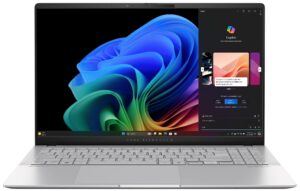

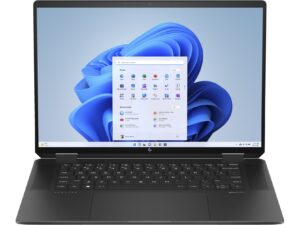


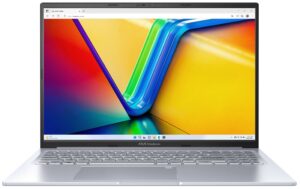
Disassembly, Upgrade options, and Maintenance
To see the internals of this device, you have to undo 10 Torx-head screws. Note that the two in the middle are hidden under small caps, which you need to unglue first.
Use a lever tool to lift the panel behind the two hinges. Press the hinge and pop the panel to create a gap. Work around the sides and front, but don’t pry the rear. Lift the front of the panel and push it slightly backward. If this doesn’t work, you may need to pry the back.
Be aware that the vent cover is attached to the bottom panel, so pop its top section below the lid’s lower part where the internal clips are.
Here’s the internal look of the laptop.
On the inside of the bottom plate, we can see a dust filter for the ventilation grill.
The battery is a 70Wh model. To remove it, pull out the connector from the motherboard and undo the 5 Phillips-head screws that keep the unit in place. The capacity is enough for 15 hours of video playback.
The memory is soldered as well as the Wi-Fi card. You get 16GB or 32GB of fast LPDDR5x-8448 MHz RAM.
For storage, there is just one M.2 slot for 2280 Gen 4 SSDs.
The ASUS IceCool thermal system has two fans, a pair of heat pipes, a duo of top-mounted heat sinks, and a large heat spreader.
You can easily remove the two fans or the cooling itself. Detach the fan connectors and you also have to undo three Phillips-head screws for the left unit and two for the right one. Untangle the two cables around the fan housings. Carefully remove the fans.
The cooling is held in place by four Phillips-head screws on the sides of the heat spreader. Gently lift the cooling with a lever tool.
Now, we can see the soldered memory modules and preapplied soft thermal interface material (also known as “Thermal Putty”) for the other components around the SoC.
Now, the cooling is fully removed.
Verdict
 The ASUS Vivobook S 15 OLED S5507 is an interesting device that is loaded with rich AI functionality. For example, the Live Captions function is useful for real-time translation with automatically generated speech captions. The Cocreator app is tons of fun. Basically, you can sketch something in Paint and it can be transformed into an (almost) real-world-looking image. You’ll also find preinstalled software such as Recall, Automatic Super Resolution, and more.
The ASUS Vivobook S 15 OLED S5507 is an interesting device that is loaded with rich AI functionality. For example, the Live Captions function is useful for real-time translation with automatically generated speech captions. The Cocreator app is tons of fun. Basically, you can sketch something in Paint and it can be transformed into an (almost) real-world-looking image. You’ll also find preinstalled software such as Recall, Automatic Super Resolution, and more.
Our laptop has the 12-core Qualcomm Snapdragon X Elite X1E-78-100 paired with 32GB of LPDDR5x RAM. The machine feels fast for everyday tasks such as Web browsing, watching videos, or editing MS documents. The CPU can maintain super solid 3.40 GHz even in “Whisper mode” which leads to very good comfort under full processor stress since the fans are quiet. By the way, despite its name, the “Full-speed mode” doesn’t bump the fan RPM to the max but it offers a more aggressive fan rotating speed when the CPU is pushed to its limits. Even then, the noise isn’t intrusive.
The Windows integration for ARM isn’t perfect. Some apps and games don’t start at all which can be a problem for the early adopters. Of course, you can expect better software compatibility with the upcoming BIOS and OS updates. If you plan to use this machine for casual home and office tasks, it’ll be fine since the CPU packs plenty of power for such usage. Given the software glitches, if you need a device for serious work, you may want to wait a bit for the updates to come out.
The 3K 15.6″ 120Hz OLED display (Samsung ATNA56AC03-0) is great. It offers an infinite contrast ratio, 610 nits max brightness in HDR mode, and 390 nits when viewing SDR content + full DCI-P3 coverage. The out-of-the-box color accuracy is very good. The OLED Flicker-Free Dimming function also eliminates the typical pulsations for this kind of panel.
There isn’t a lot to do when it comes to upgradability. The memory is soldered as well as the Wi-Fi card, and there is just one slot for Gen 4 SSDs. In our case, the QLC NVMe is decently snappy. On the other hand, you can easily pry the bottom panel to clean the internals, and removing the cooling to apply a new thermal paste isn’t a hard job. The port selection is rich – we have four USB ports and two of them are USB4.
The ASUS Vivobook S 15 OLED S5507 is a snappy device with a superb OLED display, long battery life, comfortable input devices, and compact dimensions.
You can check the prices and configurations in our Specs System: https://laptopmedia.com/series/asus-vivobook-s-15-oled-s5507/
Pros
- Great OLED display with 100% sRGB and DCI-P3 coverage (ATNA56AC03-0)
- Infinite contrast ratio, 120Hz refresh rate, and 2880 x 1620 resolution (ATNA56AC03-0)
- Very high color accuracy (ATNA56AC03-0)
- Good audio quality
- “OLED Flicker-Free Dimming” mode in MyASUS software
- Comfortable keyboard and smooth touchpad
- 1080p IR Web camera with a privacy shutter
- Good overall performance for everyday tasks and normal office usage
- Quiet fan in “Whisper” mode
- Four USB ports + MicroSD card reader
- Long battery life
- Rock-solid 3.40 GHz CPU clock no matter the fan mode
- Metal build
- Good comfort under full CPU stress
- Snapdragon X Elite chip with rich AI capabilities
Cons
- PWM usage without the “Flicker-Free Dimming” mode (ATNA56AC03-0)
- Soldered RAM + only one M.2 Gen 4 slot
- Some apps and games don’t work at all
- Expensive
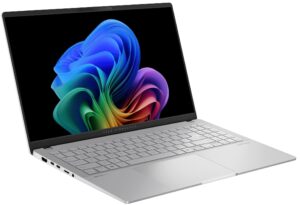
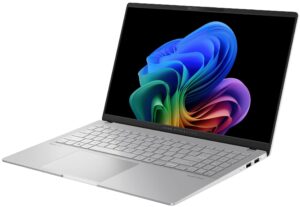
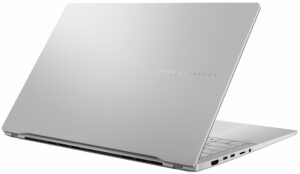

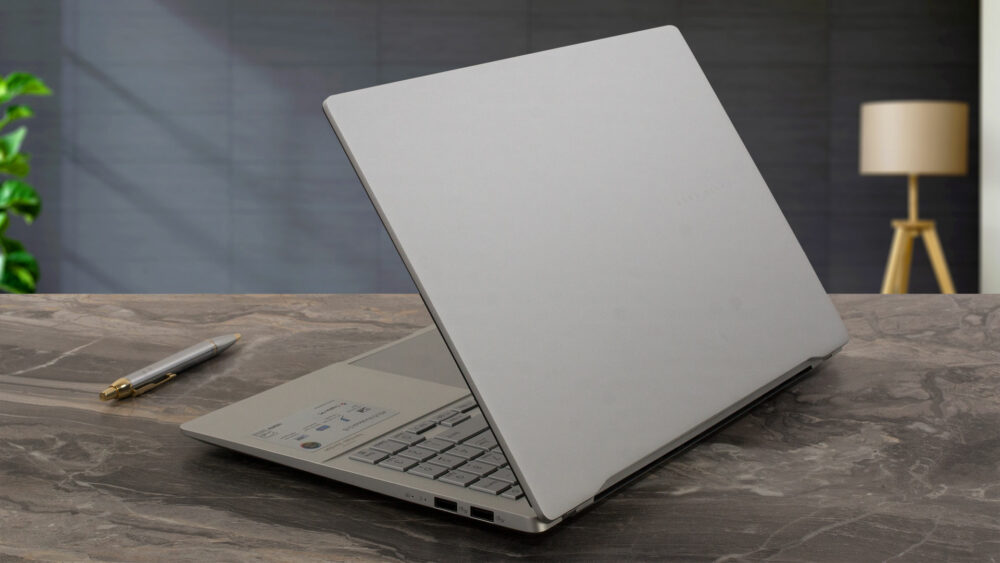
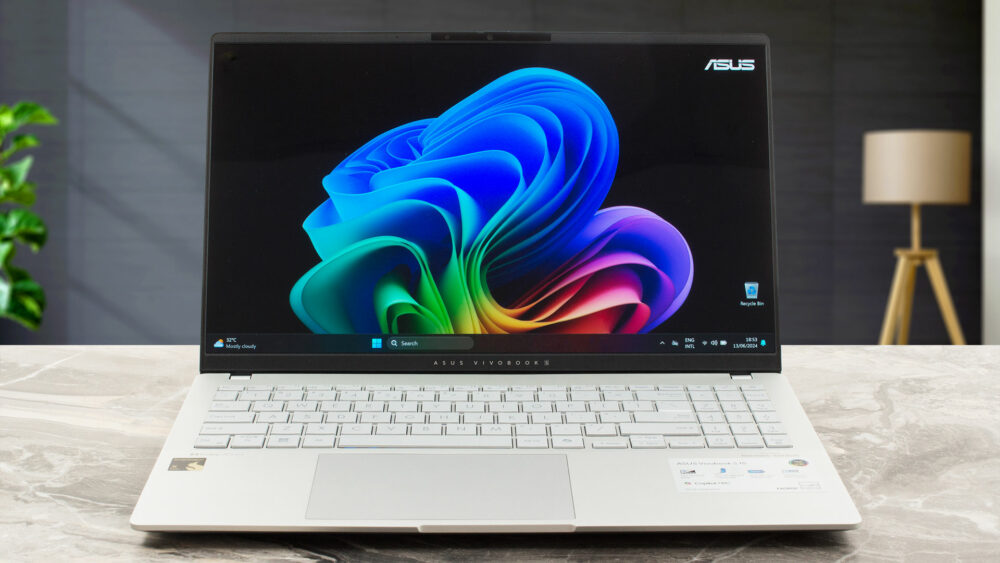

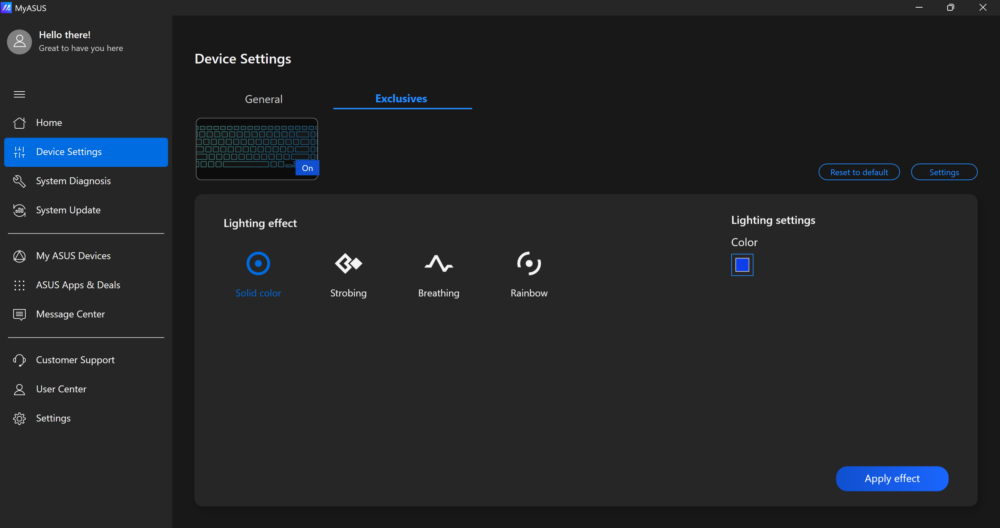
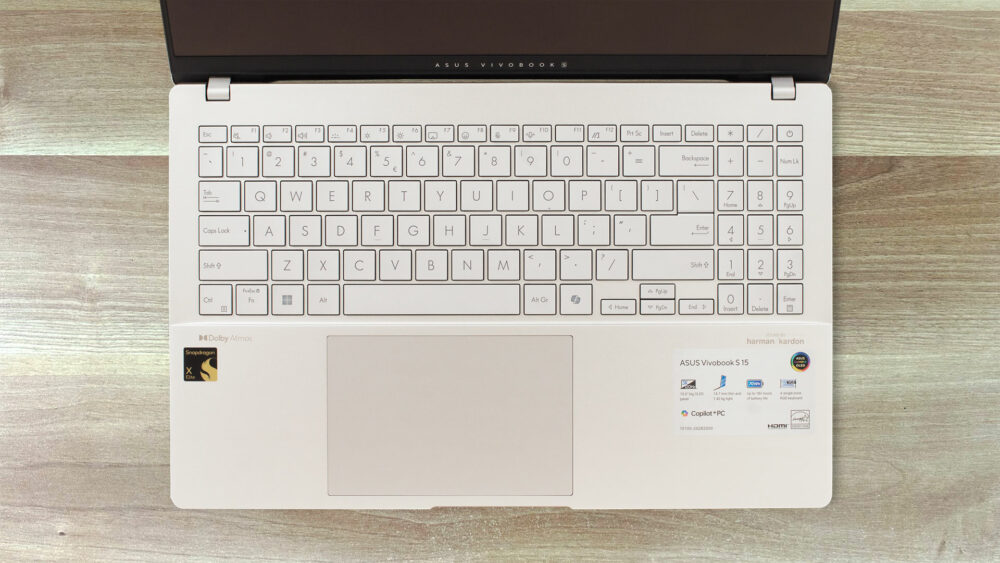
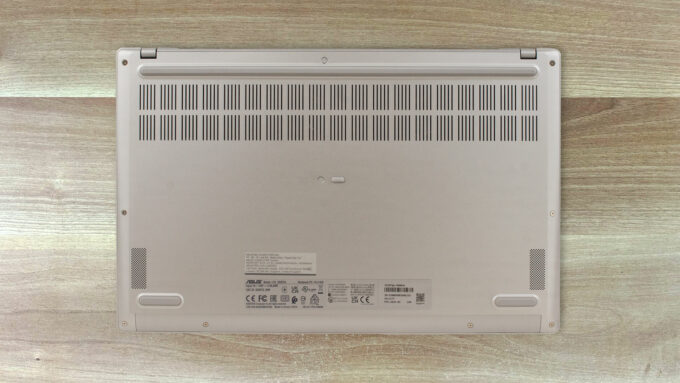




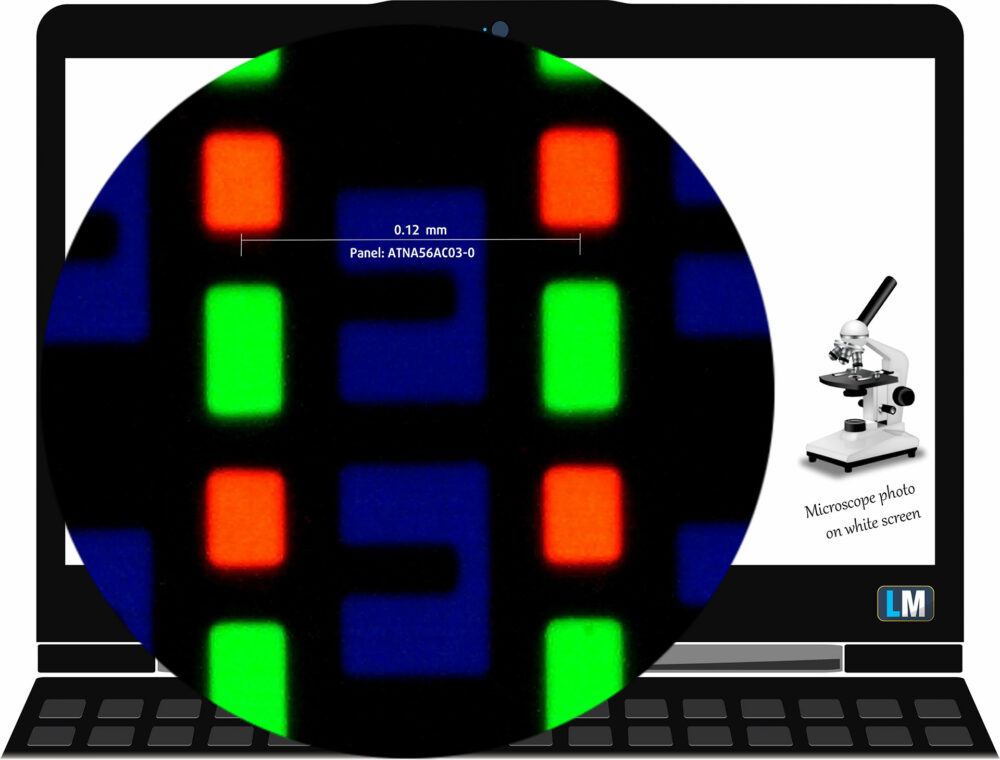

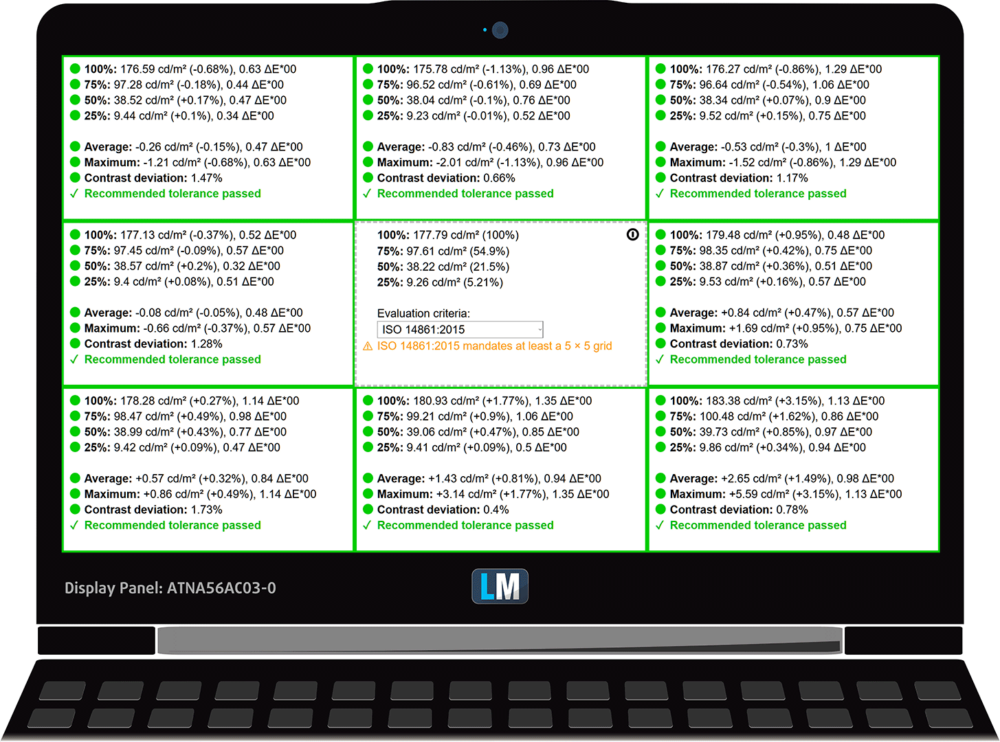
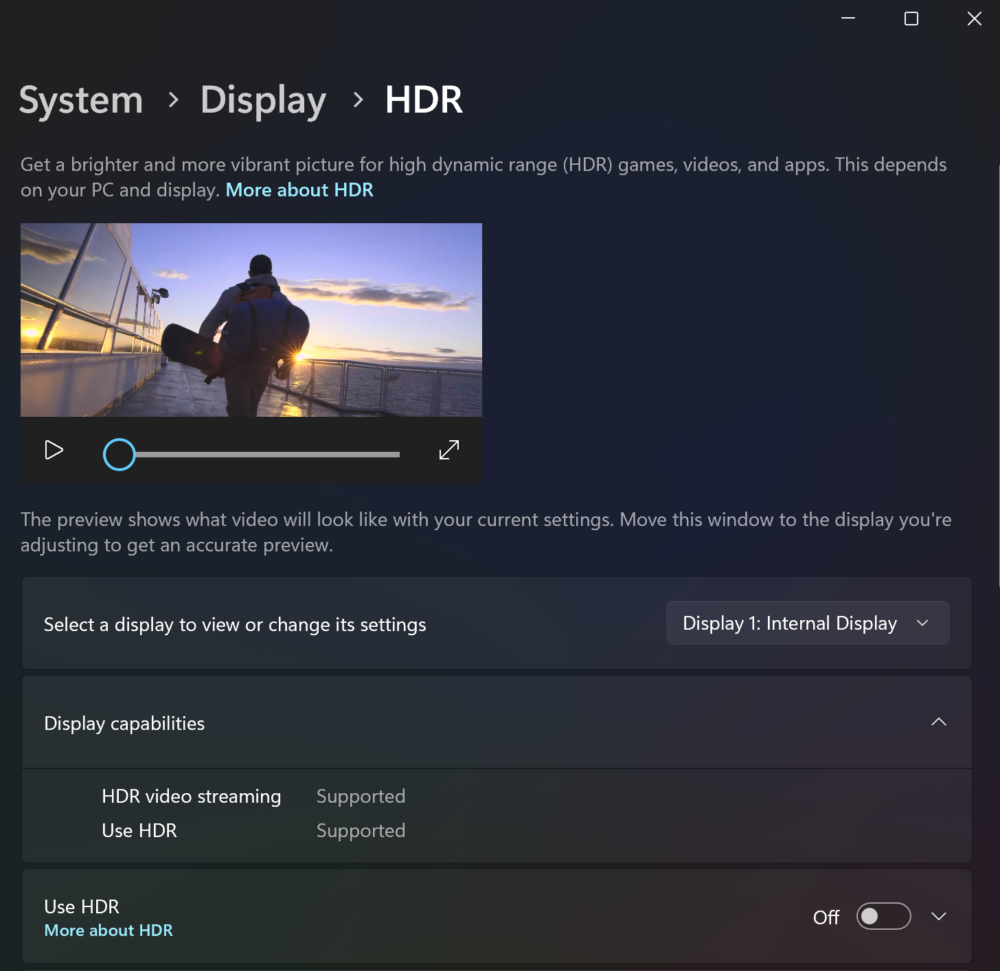
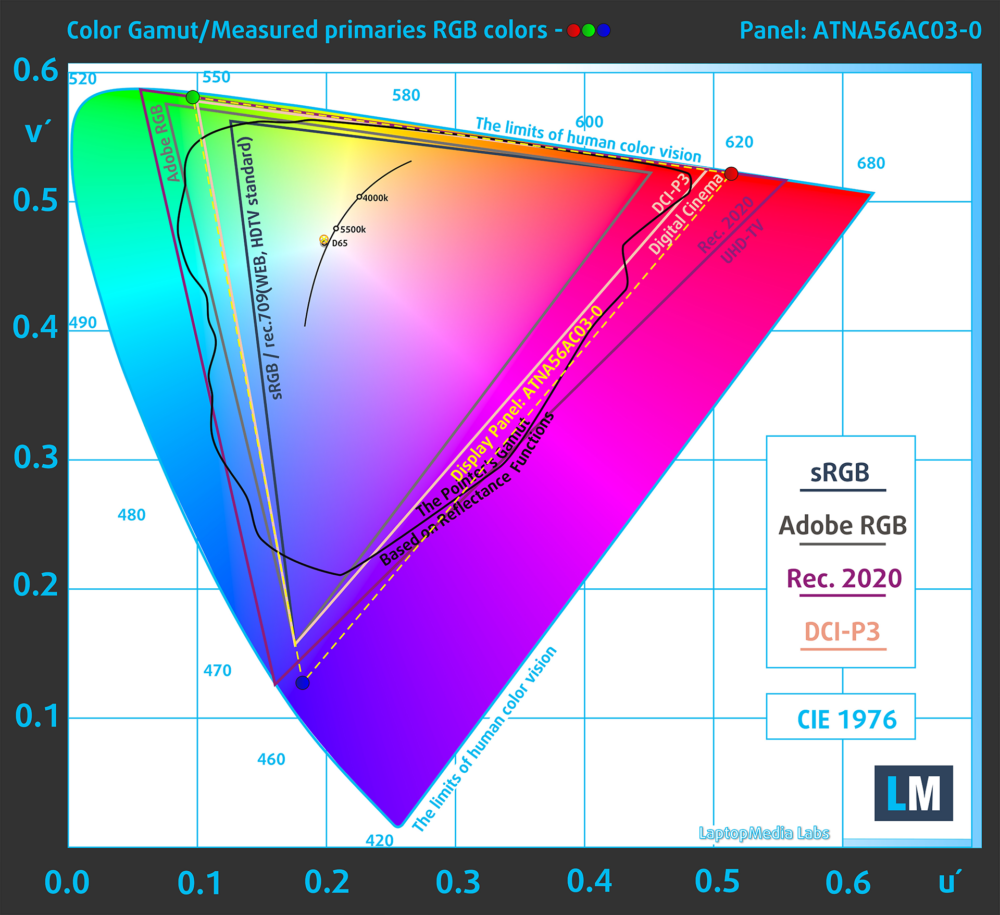
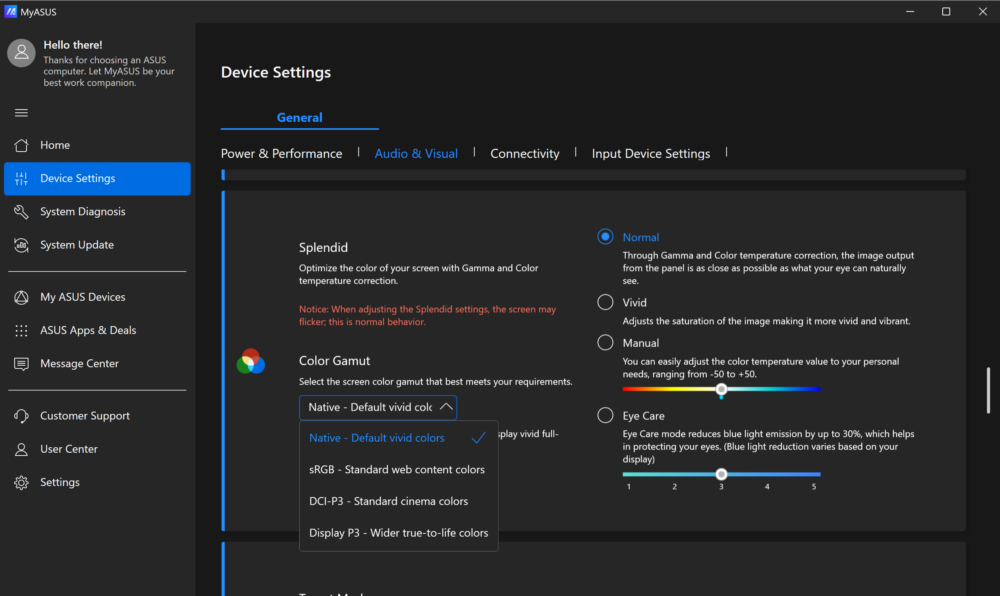
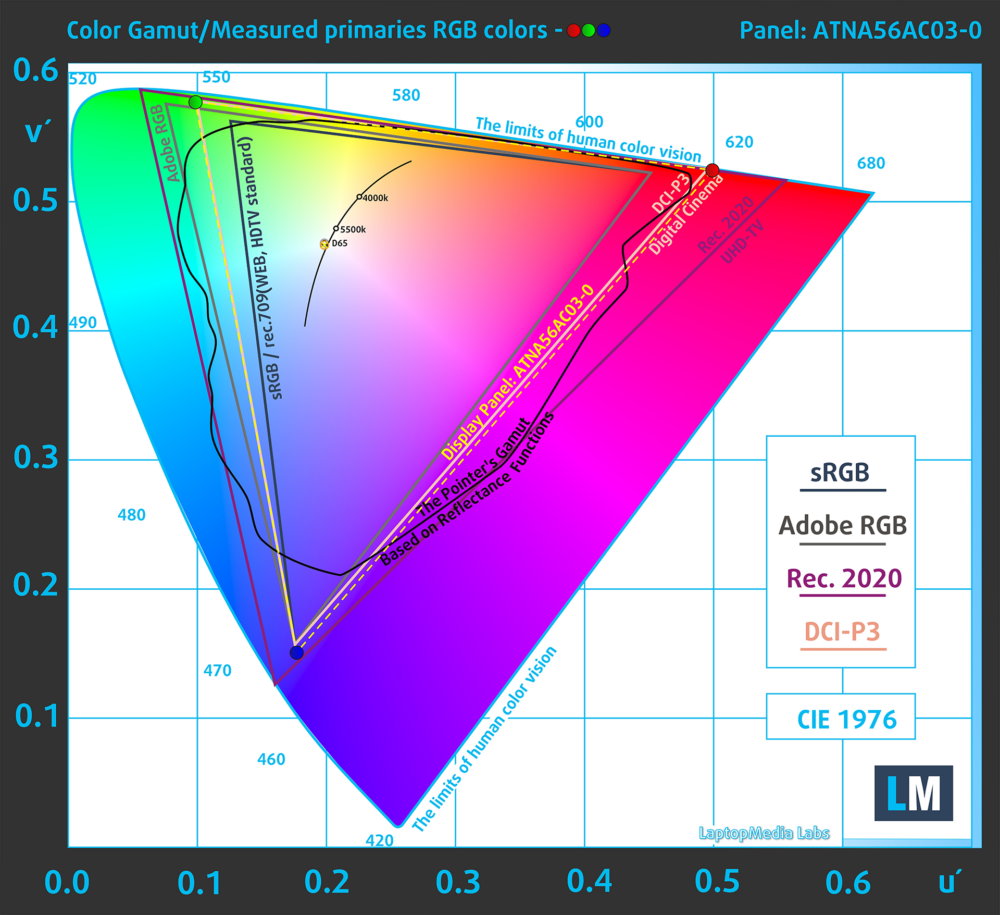
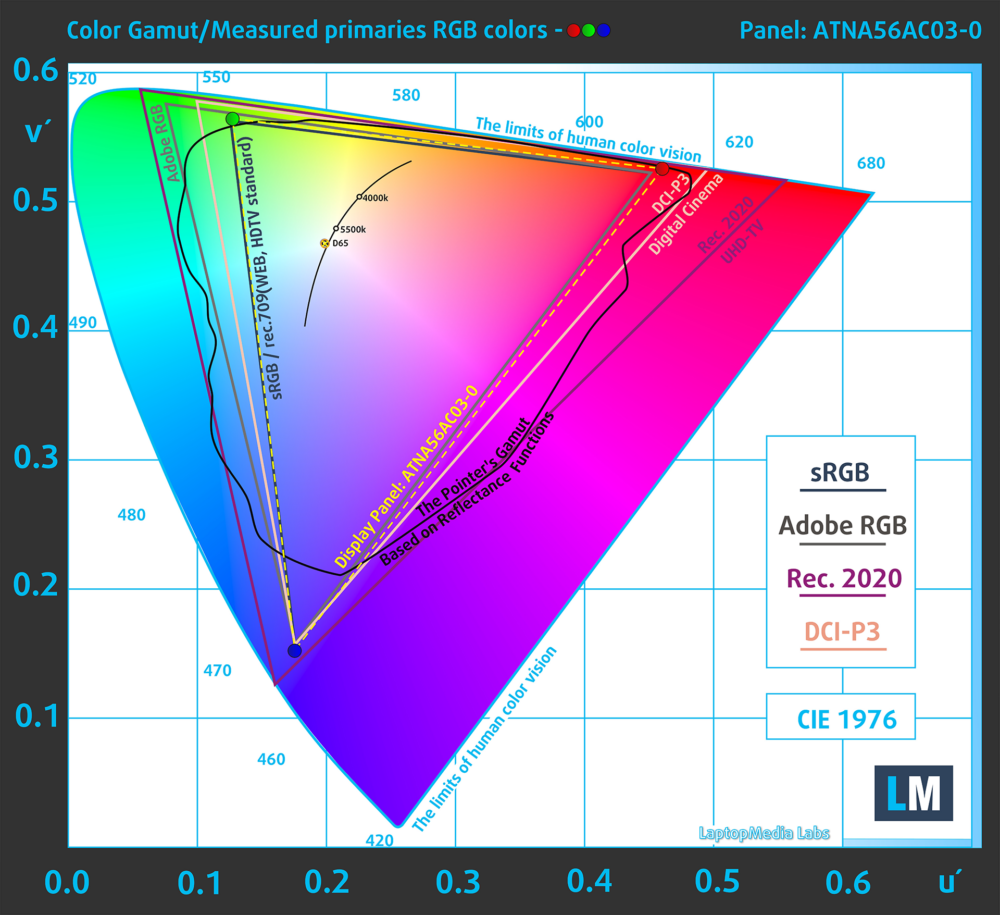
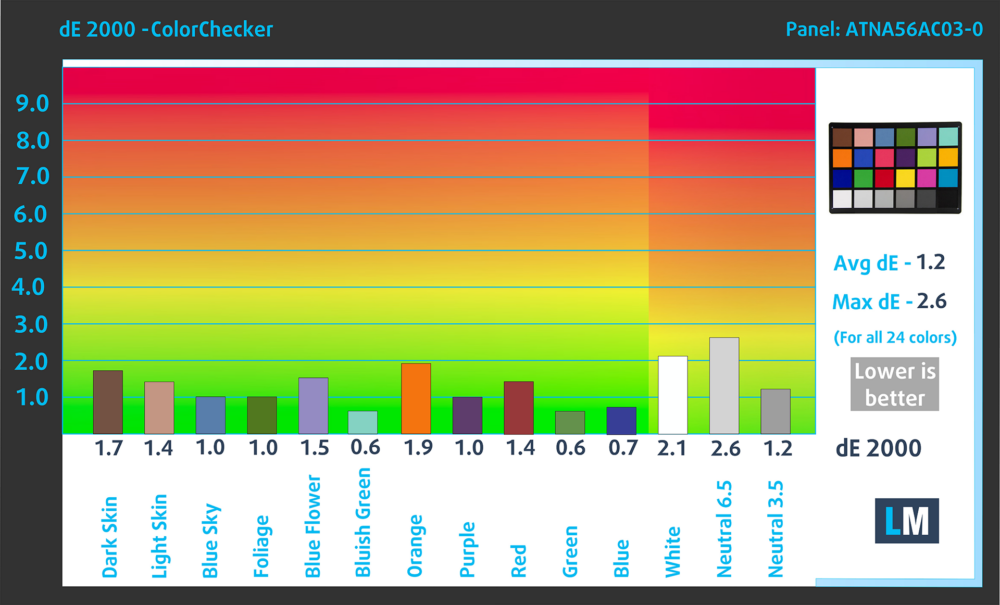
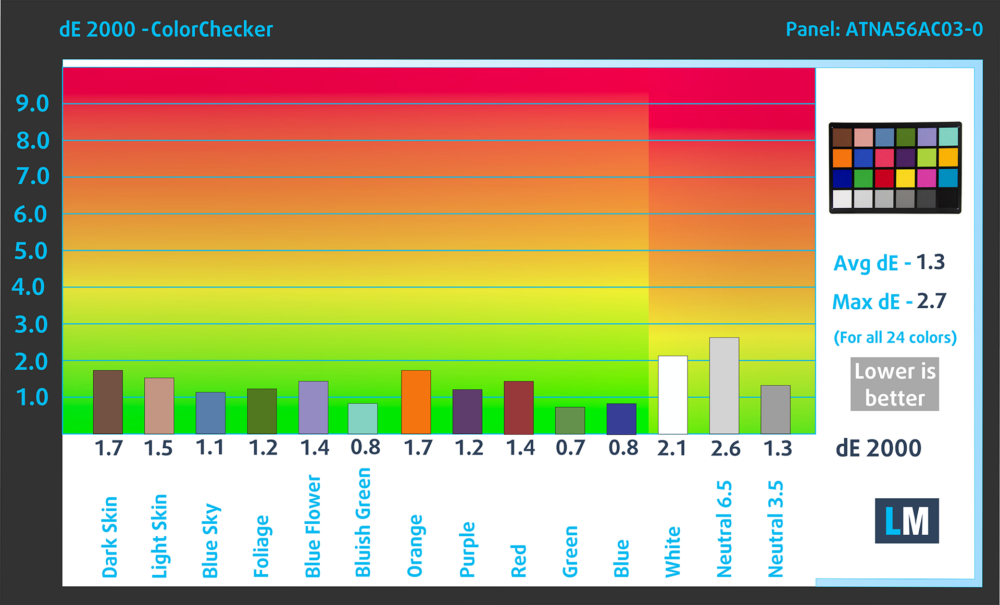
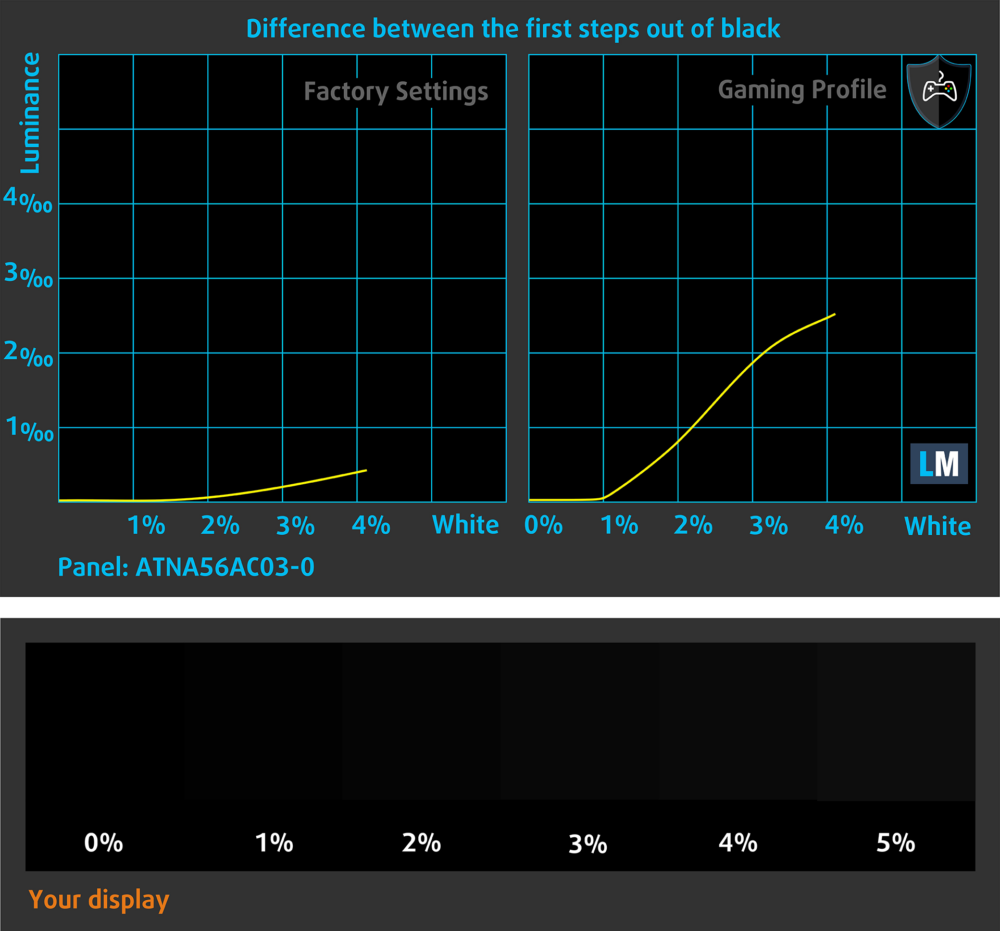
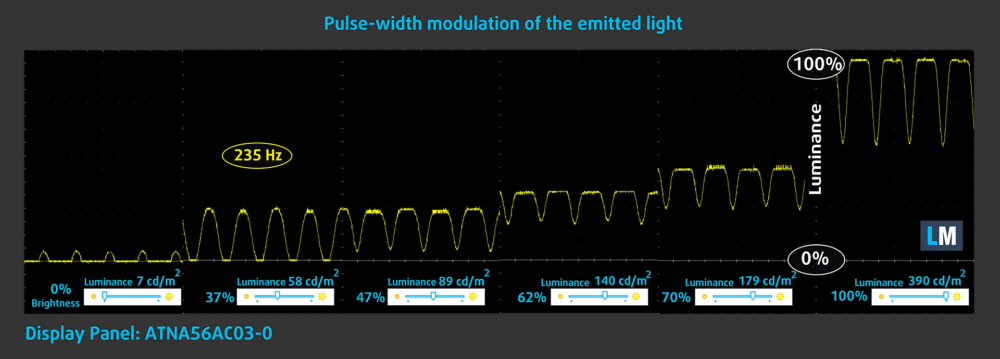
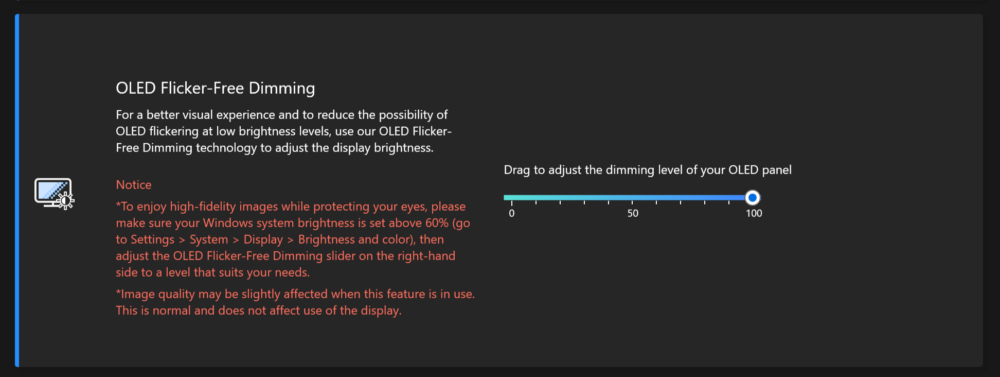
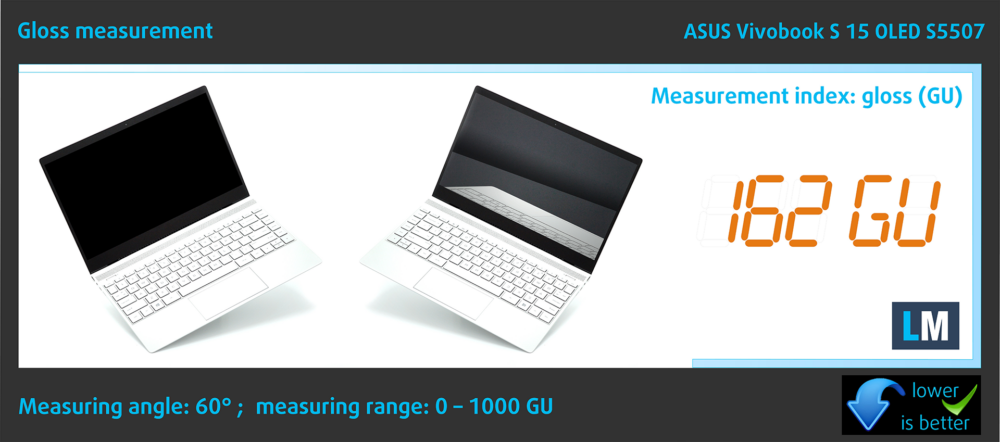





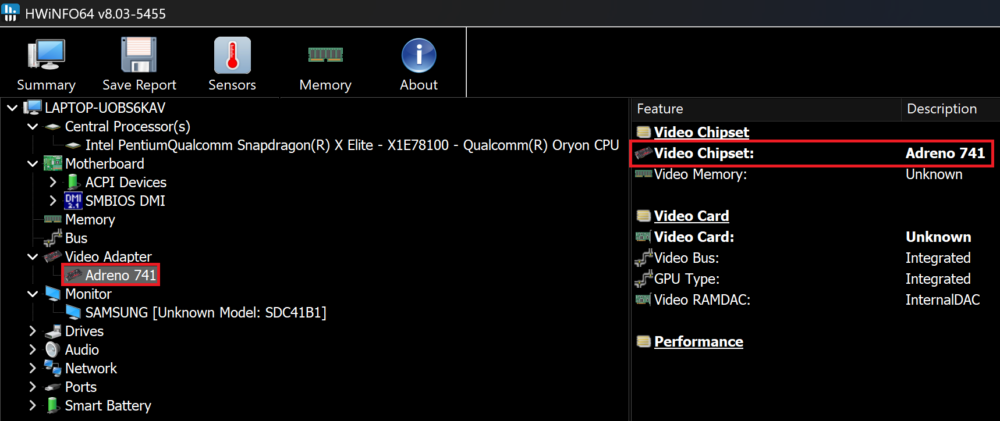



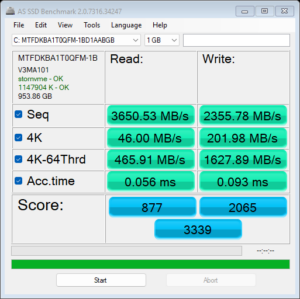
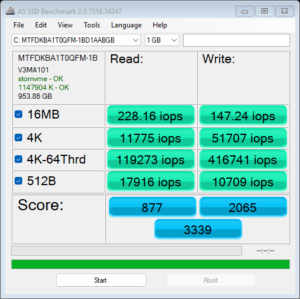
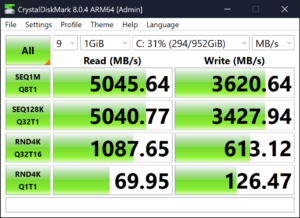

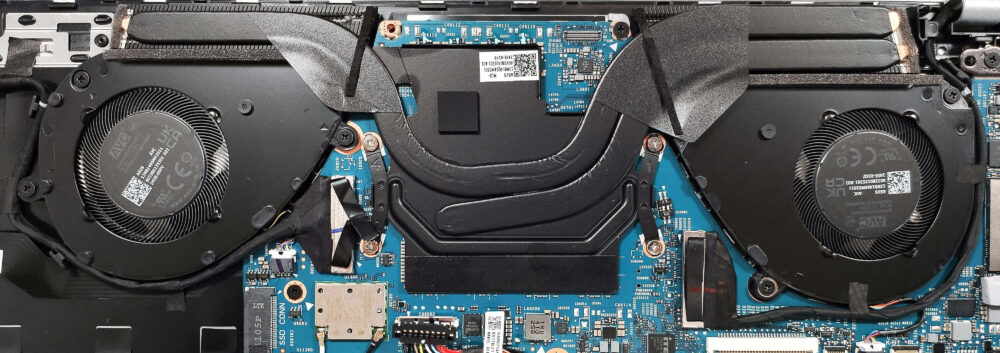

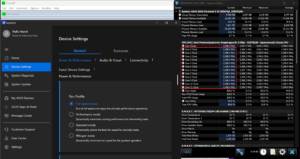 “Full-speed mode”
“Full-speed mode”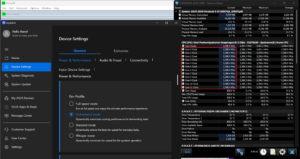 “Performance mode”
“Performance mode”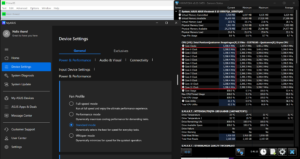 “Standard mode”
“Standard mode”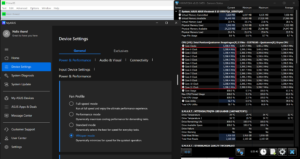 “Whisper mode”
“Whisper mode”





